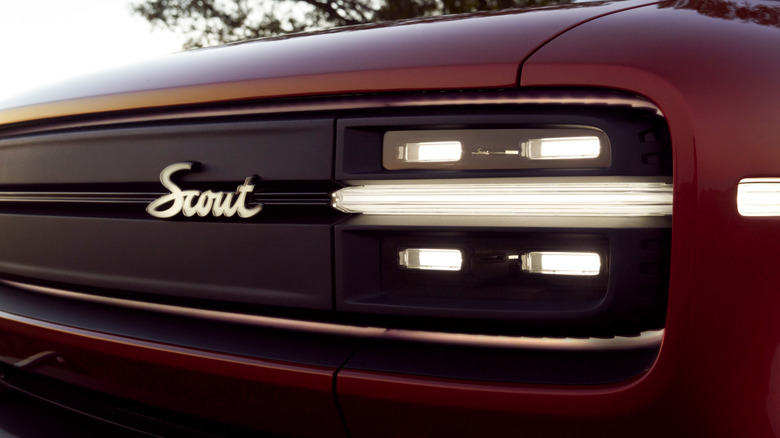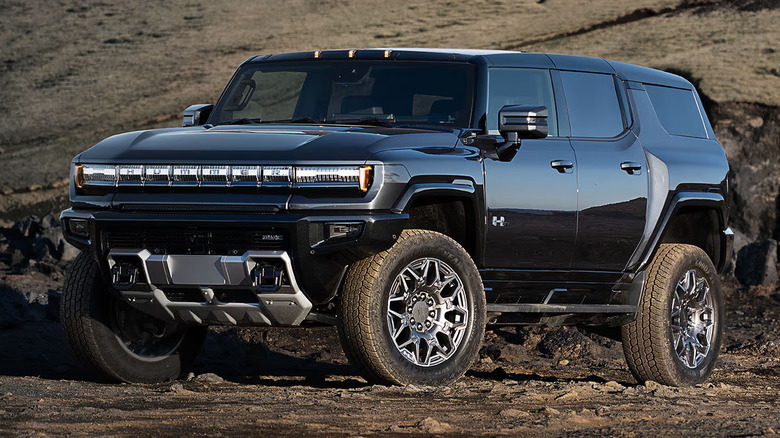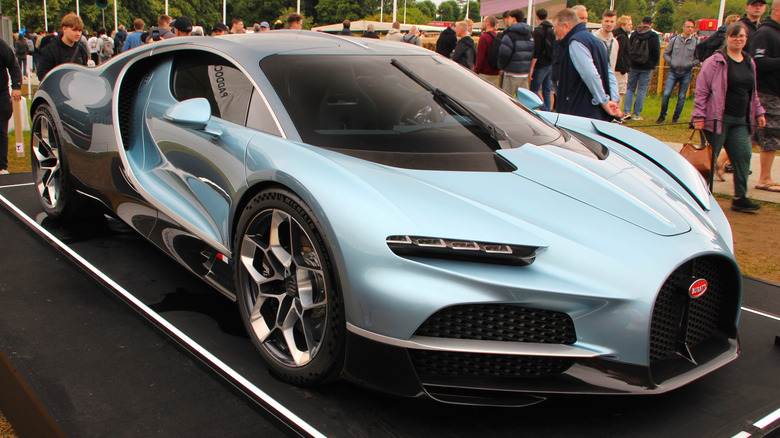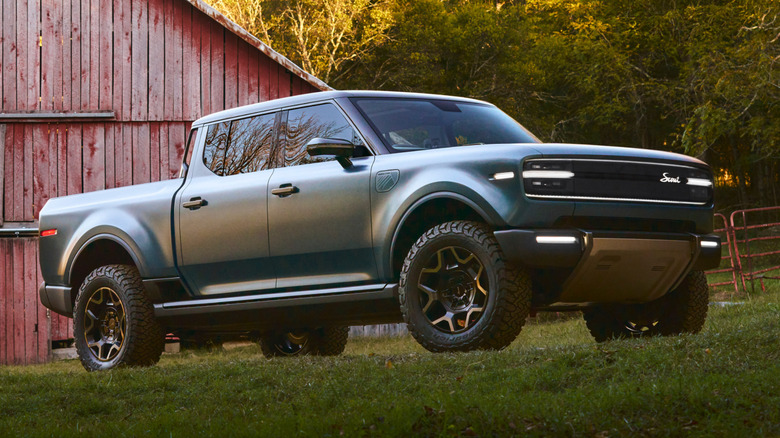3 Discontinued Car Brands That Came Back From The Dead
If you establish a car brand, the goal is that it will be a company that will last for decades upon decades. There are car brands around today that have existed for well over a century, dating back to the birth of the automobile. Of course, every company doesn't get to be Ford, Fiat, or Peugeot, the last of which is the oldest car brand in the world. So many automakers have crashed and burned due to poor sales, bad publicity, or money simply running out. Once these companies die, they usually remain dead. However, there are times when a brand gets a second life, looking to recapture what made it an enticing prospect in the first place.
These revivals occur for several different reasons. Sometimes a bigger car company purchases the brand and revives it as a specialty label. Other times, corporate shuffling has a brand reinstated as its own entity that never officially went away in the first place. A great example of this is Lincoln. This was its own company before being acquired by Ford and eventually merged with Mercury to form Lincoln-Mercury. Once Ford decided that Mercury was no longer viable, Lincoln was able to be its own brand once again. What we are going to look at here, though, are car brands that truly shuttered and went away for an extended period of times — sometimes years, sometimes decades — before somebody decided that they should see the light of day once more, whether that be adhering to the spirit of its original incarnation or using the name to explore the future of automaking.
Hummer
Few vehicles have been more of a statement piece on the road than a Hummer. These were Humvees originally designed for military purposes, and Hummer allowed any individual to be able to drive one. Hummer originally was established in the early 1990s, but it was the H2, introduced with the 2003 model year, where it became something of a cultural phenomenon, particularly in it being embraced by the hip-hop community of the era. What became clear is that the Hummer craze was rather short-lived, and in 2008, you can see sales sharply decline for both the H2 and H3 models, probably due in no small part to the Great Recession. It got so bad so fast that the company shut its doors after 2010.
General Motors has owned the Hummer brand since purchasing it from AM General in 1999. The company sat on the name for a decade before deciding to revive it for the 2022 model year, but instead of it being a gas-guzzler of the highest order, it was now an all-electric model called the Hummer EV, available as both a pickup truck and an SUV. Aside from its more environmentally friendly powertrain, the biggest difference between the Hummer of today and the company of the past is that Hummer is not technically its own company anymore. This EV model comes to us from the GMC brand, and it uses the Hummer name for the specific model. In terms of style, it is everything you remember the classic Hummer being in terms of size and luxury, but you are thankfully getting more than 12 mpg.
Bugatti
There is a long history of Italian-made high-performance vehicles, whether they be from Ferrari, Lamborghini, Maserati, or Alfa Romeo. One of those legendary companies is Bugatti, which was originally founded all the way back in 1909 by the company's namesake, Ettore Bugatti. Its founder would be the driving force of the company for decades, and upon his death in 1957, production on all Bugatti vehicles stopped. A few years later, Bugatti was purchased by the Spanish company Hispano-Suiza, but its new owners never really did anything with the brand.
Bugatti's first revival started in 1987, when the brand was purchased by an industrialist named Roman Artioli. This revival was short-lived. Effectively, this version of Bugatti developed only one viable vehicle, called the Bugatti EB110, in 1991. Beyond that, the company spent a lot of time on research and development, but when you are doing that instead of producing cars that will make you money, your business isn't going to last very long. Artioli's Bugatti declared bankruptcy in 1995, due in no small part to the hefty price tag for the EB110.
Three years later, Bugatti would find a new owner with the German automaker Volkswagen, and that company remains the owners of Bugatti to this day, where it continues to produce high-performance vehicles. As of this writing, Bugatti produces three different models. The first is the Tourbillon, a 1,000 hp V16-powered machine partially constructed with 3D printing. Next is the W16 Mistral convertible that uses the unusual W16 engine that gets you nearly 1,600 hp. Last is the track-only Bolide that uses the same W16 engine. Bugatti is now just humming along.
Scout Motors
While the Hummer was a company that went away and was revived as a model name for a different company, the reverse is what has occurred with Scout Motors. The current iteration of this company was created in 2021, when Volkswagen purchased Navistar, and among the company's portfolio was the Scout nameplate. This is a name that goes back to the early 1960s, when the company International Harvester started producing a vehicle called the International Scout. The very first model was the Scout 80 and was designed to be an off-road vehicle to be a competitor to the Jeep CJ. It was available as either an open-top roadster or a pickup truck. The Scout 800 and Scout II models would follow in the subsequent years before production on the vehicles would cease in 1980.
The revival of the Scout name is not all that dissimilar to why Hummer was revived, but instead of Volkswagen simply making this a model name, the decision was made to form Scout Motors. These new Scout vehicles will give customers the choice of either an all-electric vehicle or a hybrid SUV or truck, and the hope is to start shipping out units for 2026, though it could be later. The company is currently offering two different models for reservations. The first is the Scout Traveler, which is an SUV, and the other is the Terra, a pickup truck. Both the Traveler and Terra names come from the original Scout run, as both were trim options for the Scout II in the back-half of the 1970s. Scout Motors shows that any name can be revived.



